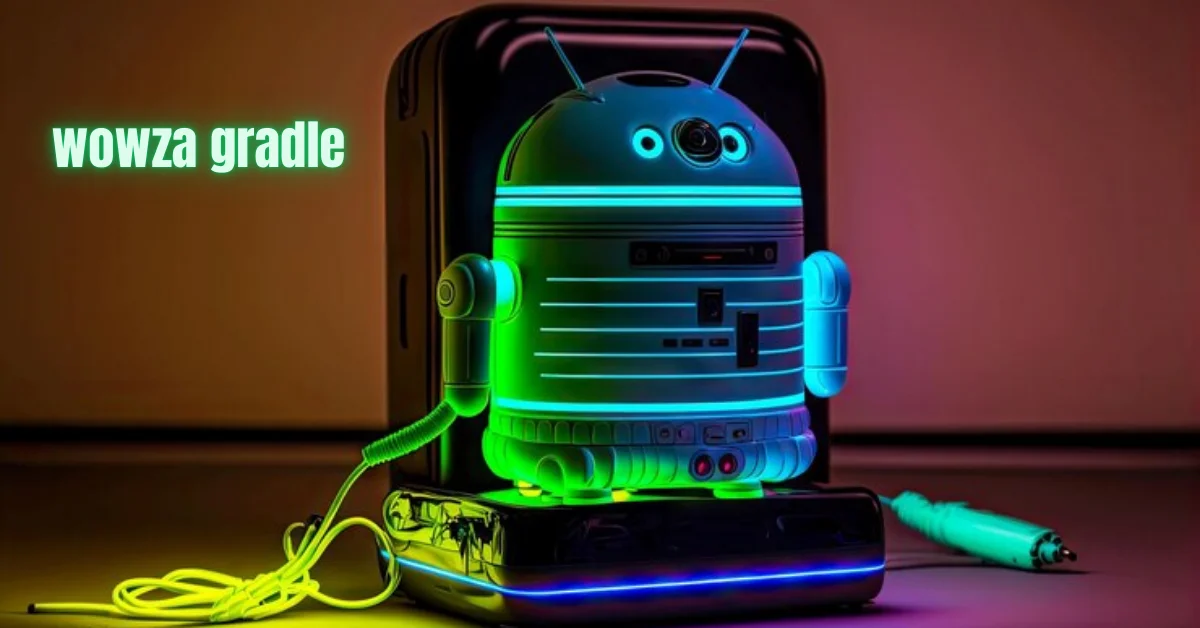Introduction to Wowza Gradle
Are you an Android developer looking to streamline your workflow and improve your project management? If so, you’re in for a treat. Enter Wowza Gradle—a powerful tool designed to simplify the build process and enhance the overall development experience. Whether you’re building complex applications or simple prototypes, mastering Wowza Gradle can significantly impact how efficiently you work.
Imagine having a unified system that manages dependencies, automates builds, and integrates seamlessly with various tools—all while keeping everything organized. That’s exactly what Wowza Gradle offers. This blog post will guide you through its essential features, set-up procedures, and best practices tailored specifically for Android developers like yourself. Let’s dive into this exciting world where efficiency meets innovation!
The Benefits of Using Wowza Gradle for Android Development
Wowza Gradle simplifies the build process for Android developers, making it more efficient. By managing dependencies effectively, it reduces conflicts and ensures that your project uses the correct versions of libraries.
This tool enhances automation in building applications. Developers can set up custom tasks to streamline repetitive processes. With Wowza Gradle, you spend less time on configuration and more on coding.
Another advantage is its integration with continuous integration systems. Automated builds become seamless, allowing teams to focus on delivering features rather than troubleshooting errors.
The flexibility offered by Wowza Gradle cannot be overlooked. It’s designed to adapt as projects grow or change direction, accommodating new requirements without major overhauls.
Furthermore, the active community around Wowza provides support and resources that enrich the development experience. You’re never alone when facing challenges; help is always just a forum post away.
Setting up Wowza Gradle in your Android Studio Project
Setting up Wowza Gradle in your Android Studio project is straightforward. Begin by integrating the Wowza SDK into your project’s build.gradle file.
First, open the `build.gradle` file at the app level. Here, you’ll need to add the necessary dependencies for Wowza. This ensures that all required libraries are included during compilation.
Next, sync your project with these changes. Android Studio will handle downloading and resolving any dependencies automatically.
To further streamline setups, consider creating a custom Gradle task if you have specific configurations or scripts to run regularly. This can save time and reduce manual errors as you develop.
Ensure you’re using compatible versions of both Android Gradle Plugin and Wowza SDK to avoid conflicts. Regularly check for updates from Wowza for optimal performance enhancements and new features that might benefit your application development process.
Understanding the Build Process with Wowza Gradle
Understanding the build process with Wowza Gradle is essential for optimizing your Android projects. At its core, Gradle manages dependencies and compiles code efficiently.
When you initiate a build, Gradle first evaluates the project structure. It checks all configurations defined in the `build.gradle` files. This step is crucial as it determines how various modules interact.
Next, the source code undergoes compilation. Wowza Gradle facilitates this by integrating seamlessly with existing libraries and plugins relevant to streaming media applications.
As your app builds, tasks such as cleaning up old artifacts or running tests are automatically executed based on predefined rules. Customization options allow developers to tweak these tasks according to their project’s needs.
The output includes APK files ready for deployment or testing. Understanding each phase of this process enhances your ability to troubleshoot issues effectively while ensuring smoother development cycles.
Best Practices for Utilizing Wowza Gradle
When using Wowza Gradle, organization is key. Create a clear project structure. This not only enhances readability but also simplifies maintenance.
Leverage the power of dependencies wisely. Specify versions in your build.gradle file to avoid conflicts and ensure stability across builds. Update them regularly while testing for compatibility.
Use Gradle’s caching mechanisms to speed up builds. By enabling caching, you can significantly reduce build times on larger projects.
Incorporate continuous integration tools into your workflow. Automating tests and deployments saves time and catches issues early in development cycles.
Document your configurations thoroughly. Clear documentation aids team members who may join later or revisit parts of the project after some time.
Troubleshooting Common Issues with Wowza Gradle
Working with Wowza Gradle can sometimes present challenges. Understanding common issues helps streamline the development process.
One frequent problem is dependency conflicts. Always ensure that your library versions are compatible. This prevents build failures and runtime errors.
Another issue arises during configuration errors in the `build.gradle` file. Double-check paths and settings for accuracy. A small typo can lead to significant problems down the line.
Network-related issues may also occur, especially when downloading dependencies or plugins. Ensuring a stable internet connection often resolves these hiccups swiftly.
If you encounter performance bottlenecks, consider optimizing your Gradle tasks by utilizing parallel builds or configuring cache preferences effectively.
Monitoring logs while building can provide insights into any underlying problems too. Pay attention to error messages; they usually point you right to the source of trouble.
Conclusion
Wowza Gradle is a powerful tool that can significantly enhance your Android development experience. By simplifying the build process, it enables developers to focus more on creating innovative applications rather than getting bogged down in configuration issues. The benefits of using Wowza Gradle are clear: improved efficiency, better integration with existing workflows, and streamlined dependency management.
Setting up Wowza Gradle in your project may seem daunting at first, but following clear steps will make it manageable. Understanding how the build process works helps you leverage its features effectively. Adopting best practices ensures that you maximize the tool’s potential while minimizing common pitfalls.
Every developer encounters challenges along the way. Knowing how to troubleshoot common issues with Woowza Gradle can save time and frustration. Sharing insights and solutions within communities fosters growth and learning for everyone involved.
Embracing Woowza Gradle could be a game-changer for your Android projects, unlocking new levels of productivity and creativity as you develop engaging applications tailored to user needs.
FAQs
What is “Woowza Gradle”?
Woowza Gradle is a build automation tool tailored for integrating the Woowza SDK into Android projects, simplifying development and streamlining workflows.
How does Woowza Gradle improve Android development?
It automates builds, manages dependencies, and reduces configuration time, helping developers focus more on coding and innovation.
Is Woowza Gradle compatible with Android Studio?
Yes, Woowza Gradle integrates seamlessly with Android Studio, supporting AndroidX, Java 8, and other standard development tools.
What formats and features does the Wowza SDK support via Gradle?
It supports DASH, HLS, MP4, MP3, WebM, Chromecast, DRM, ads (VAST/VMAP/IMA), and more through easy Gradle integration.
What should I check if Wowza Gradle setup fails?
Review build.gradle for version mismatches, ensure stable internet for dependency downloads, and verify correct SDK configurations.

